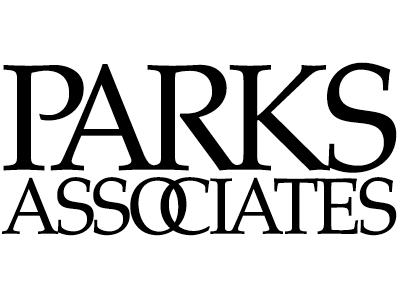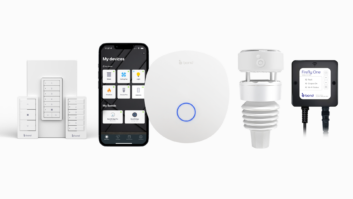
For consumers around the world, the Internet of Things (IoT) opens the door to a new and convenient connected lifestyle. The wide range of networked products and services that make up the IoT encompasses consumer-focused devices and services within the smart home, connected entertainment, connected health and fitness, and connected car markets. The IoT enables the connected consumer lifestyle.
Market trends within each of these verticals will continue to drive growth in the connected lifestyle, expanding services to virtually every part of the connected living environment. This growth is generating new competitors and creating new challenges for each part of the IoT ecosystem.
Connected CE Makers Focus on User Experience Innovation
CE and software makers are looking for a competitive edge by improving the user experience through immersive and interactive innovations. They are developing new form factors to increase the immersive experience while also designing technologies that enable consumers to use all of their senses when communicating with devices, and they can leverage the connectivity of their devices to deploy enhancements and new features to their products. These efforts are dedicated to creating a more natural and intuitive communications environment. The high-speed connection also creates a wealth of data points on consumer usage and interaction that companies can use to improve the individual experience.
Virtual reality specifically is poised to be a game changer because it can provide consumers with new and immersive experiences. While gaming is expected to be its initial use case, the innovation can be disruptive enough to attract non-gamers and expand the market.
Device interaction methods also contribute to immersive experiences. Voice, primarily natural language interaction and movement controls, including gestures and head movements, enable consumers to communicate with devices in much the same way as they would communicate with another person.
Rather than a one-size-fits-all interaction approach of interfaces like the remote control, communications solutions will evolve over the next few years to become hybrid solutions, aiming to replicate users’ natural interactions with their environments. Consumers will be able to communicate with an interface in whichever way is most natural and instinctive to obtain desired results, which could also surmount physical handicaps and generational gaps among the user population.
Pay TV, Networks Respond to Challenges Presented by OTT
The rise and expansion of OTT video services are challenging the traditional video ecosystem, including strategies, experiences and montetization. They are also facilitating a rapid shift in consumption. The time- and place-shifting trends that began with the DVR and physical media have moved into the online world. As video availability has become nearly ubiquitous on connected devices, consumers are squeezing ever-more video entertainment into their daily lives. As a result, on-demand consumption is now rivaling broadcast TV consumption. Non-linear video consumption will overtake linear video consumption on the TV screen in 2015.
The success of Netflix and a handful of other OTT services has motivated traditional players to jump into the OTT video services market, seeking to capture those consumers who are opting out of traditional broadcast or pay TV. 2015 has seen the addition of several new services, including:
– CBS launched CBS All Access, which includes current episodes, past seasons on-demand and live local television
– Hulu announced new partnerships with Discovery Communications and FX Productions
– DISH Network announced Sling TV, a streaming pay-TV service with access to popular linear programming
– HBO launched its highly anticipated stand-alone OTT service in April 2015
Showtime plans to launch its OTT service in 2015
Content distribution is evolving in other ways as well. Some smaller and independent content providers have turned to multichannel networks (MCNs) and digital video platforms like YouTube and Dailymotion as alternative platforms for distribution. These platforms are highly popular with young consumers and are heavily oriented towards ad-based business models.
The expansion of video into the IP arena stands to significantly impact the IoT space. Video is a primary driver of broadband network traffic, and broadband providers are actively upgrading their networks to handle the expected explosion of video consumption. This expansion of network capacity and increases in speed provide fertile ground for IoT expansion within the home and among connected devices.
Expanding Smart-Home Market Depends on Value Propositions
The market for smart-home systems has grown, in large part, due to the success of bundling security services, smart devices and energy-management services. Cable and telco service providers will continue to expand the smart-home category in the U.S. by bundling smart-home and security services with other service offerings.
No killer app or single value proposition is driving adoption of smart-home solutions. Safety and security are the key value propositions, and as part of a bundle of value-added services, they can drive the purchase of smart-home products and services. Offering products with the most flexibility with regards to interoperability, installation and device services is attracting the broadest segment of consumers.
Continued advancement of smart devices with home-energy-management value propositions will occur as consumers become more aware of smart devices that help them manage their home’s electricity usage. Currently, one-third of U.S. broadband households find at least one smart-energy management feature to be appealing. However, when bundled together, these value-added services become attractive enough that a significant percentage of consumers are willing to pay for a package of services. Utilities and smart-home service providers should oblige consumer preferences and position their offerings as services in addition to provisioning devices.
Connected Cars Converge with the IoT
The automobile is increasingly becoming a core part of the Internet of Things as vehicle connectivity capabilities are embedded deeper in the design while addressing more use cases, from entertainment services to smart-home functions. Mobile network operators and software developers in particular are in a great position to benefit from this new platform for connected services and applications.
However, all players in the connected vehicle market must consider the continued development of IoT in their long-term connected car strategies. Early vehicle-to-vehicle, vehicle-to-infrastructure and vehicle-to-home services are already on the market, with many more just over the horizon. The long lifecycle of vehicles and the potential crossover opportunities of connected cars to smart-home and smart-city applications require OEMs, app developers and carriers to assume that the platforms they are designing now will be employed for IoT applications many years into the future.
Connected Health & Wearables Benefit from “Quantified Self”
The arrival of connected health and fitness devices is good news for consumers. However, they are a challenge to a healthcare industry hoping to make good use of the data from these devices. Care providers are not in the business of collecting personal health and wellness data from a variety of devices, even though they have an interest in what their patients do between visits. This challenge translates to a market opportunity for technology vendors that can integrate and aggregate sensor and device data for healthcare providers.
Big data analytics for health applications promises to create a better and more comprehensive picture of an individual’s health risks and can help develop personalized care plans that promote healthy lifestyles in a highly effective way. Specifically, Parks Associates expects companies to experiment with big data primarily in the categories of chronic care management, fitness and social media, and independent living in 2015.
Additionally, health and wellness have become the most dominant use cases for wearables. Consumers are drawn to the benefit of self-tracking as wearables and apps have made health and wellness tracking so convenient that a “quantified self” experience – in which consumers use technology to track their daily routines to gain new insights into how they might improve or optimize their lifestyles – is now more mainstream. The success of the entire wearables category will draw interest from care providers in leveraging wearables to collect more meaningful patient data and offer more personalized support for health improvement.
Overall, the U.S. market is still the best connected health market in the world in terms of size and near-term growth opportunities. Chronic care markets in Germany, Spain, France and Japan also look promising. For virtual care markets, the U.S., Spain, France and China are poised to experience faster growth than other nations.
The Growth of IoT
Innovation, new products and services, sufficient broadband performance, resolution of security and privacy concerns, and ease of use and management of connected devices and services will fuel continued growth in connected lifestyle products and services.
Industry players should:
– Ensure that broadband performance is sufficient in order to enable a satisfactory connected lifestyle user experience.
– Find the “sweet spot” between provision of a satisfactory user experience and generation of new revenue streams. A smooth user experience will support customer retention and fuel growth.
– Leverage Cloud-based data analytics to improve customer service, provide product offering enhancements and generate additional revenue streams while, at the same time, placing customer privacy and security at the core of product and services design to eliminate a potential barrier to adoption.
Written by: Barbara Kraus, director of research; Brett Sappington, director of research; John Barrett, director of consumer analytics; Tom Kerber, director of research, home controls and energy; and Harry Wang, director of health and mobile product research
Parks Associates will bring together over 500 industry leaders for the 19th-annual CONNECTIONS: The Premier Connected Home Conference in San Francisco, May 19-21, 2015. For more information, visit ConnectionsConference.com.













